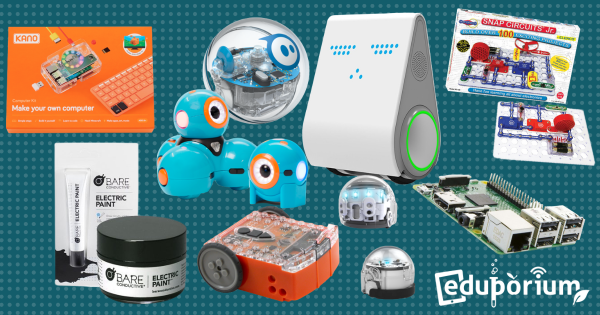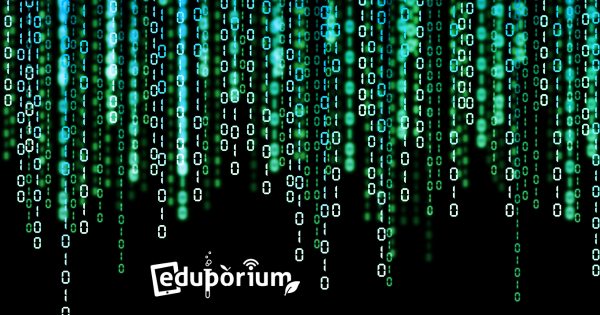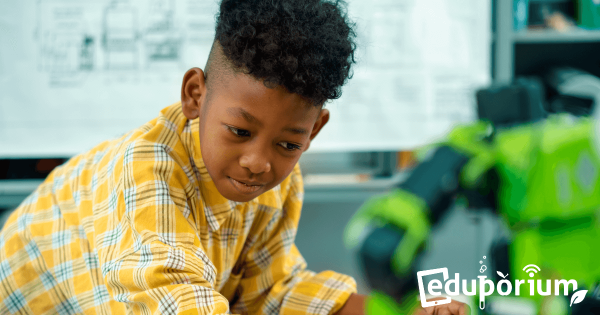There may come a time when one single EdTech tool might not be enough for all the marvelous projects and unique activities you’re planning for your classroom. You know what? We thought of that too! Eduporium now offers intuitive bundle offerings that feature specifically selected STEAM solutions grouped together to help all your students excel with hands-on learning.
Robotics
Some of the most popular paths and effective approaches to preparing students for their future involve using robotics tools. A significant subsection of STEM education, coding robots and other types of programmable devices enable a large percentage of the STEAM learning that occurs in our schools. Using educational robotics tools, students from Pre-K to college can develop key coding skills. This is largely because, among these various robot kits, many are compatible with various programming languages. So, beginning in Pre-K, a child might use the Cubetto Robot in screen-free coding activities. Then, they might move on to the Bee-Bot or Blue-Bot for CS experiences that are slightly more complex. And, by the time they're in kindergarten or first grade, they have a legitimate foundation and they're ready to continue developing fluencies in coding, problem solving, and even computational thinking.
One reason robotics in education is so effective is due to various advances in robotics equipment for schools. Beyond introducing the absolute basics of coding early on (and without a screen), students can then progress to one of the most basic forms of coding, which you might know as Blockly. So many robotics tools incorporate the Blockly coding language along with their corresponding programming environment. In fact, the Ozobot Evo, Root Robot, Edison Robot, and Dash Robot are among the most popular elementary robotics tools. These help children build on coding and technology knowledge as they prepare for the next step—text programming. In text coding, they can use tools like the databot 2.0, NAO Robot, and most of the others we've mentioned. And, through these experiences, they can develop STEM skills in a tangible way while using robotics tools to do so.
-
Eduporium Weekly | How We Can Make Making Meaningful
The constant reiteration of the importance about “STEM this” and “STEAM that” has led to the revitalization of hands-on education in many of our K-12 school systems across the country. While many of these movements—in education or otherwise—die out after their trendiness loses appeal, the Maker Movement, it appears, should be one of them that sticks around. -
Eduporium Weekly | The Power Of Code
Sure, you can write code to a computer program to gain your coding experience, but we prefer to leave that to more experienced scientists. You probably never realized this, but many modern and simple EdTech tools involve teaching the basics of coding. For example, in recent years, coding has even found its way into the educational robotics field. -
Eduporium Weekly | Tech To Be Thankful For
Here’s some helpful hints for your reading pleasure. The programming demand—whether for up-and-coming drones or some yet-to-be-established field—is likely to be booming. By programming robots in school, students are able to discover if they have an interest or skills for any of these tech-related careers and learn valuable skills anyway. -
Eduporium Weekly | The Most Realistic Robot Yet
Researchers from MIT reportedly have created a new robot in their lab and apparently, it does resemble an actual person. Engineers at the prestigious university recently revealed the interface they have constructed, which can allow human programmers to interact with a humanoid robot, allowing that robot to learn and eventually mimic human-like reflexes. -
Eduporium Weekly | Movies In The Sky
Just because it’s summer, doesn’t mean the EdTech field is on vacation! Check out some of the coolest happenings in the tech world from this week, including a plane projecting a video onto a cloud! You may be used to hearing about the Cloud, especially if you’re immersed in the EdTech world but they made news for a different reason










